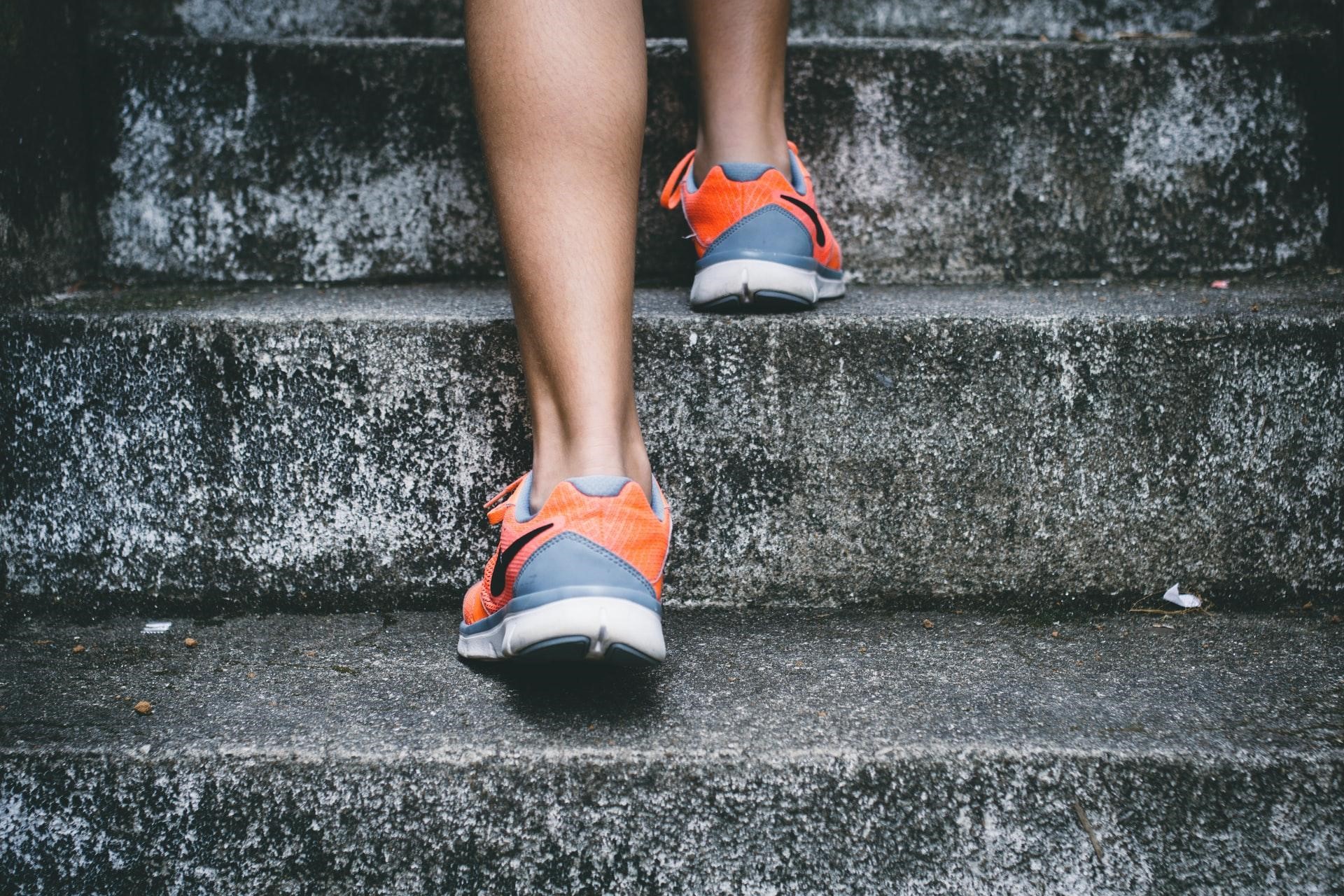Let’s be honest—mile repeats don’t get the fanfare of flashy track workouts or giant long runs. But if you ask any veteran runner or serious coach, they’ll tell you: mile repeats are straight-up magic.
They’re tough. They’ll make you question your life choices mid-rep. But they work. Whether you’re gunning for a new 5K PR or trying to make mile 23 of your marathon suck less, this workout delivers.
There’s a saying in marathon circles:
“If you want to run strong for 26.2, start by mastering one.”
It’s spot on. Nail one hard mile, then repeat it a few times—that’s where you build racing grit.
In this guide, I’m going to break down everything you need to know about mile repeats: what they are, why they matter, how to pace them, when to do them, and the mistakes to avoid. Plus, I’ll throw in stories from runners who’ve been in the trenches with this workout.
Let’s get into it.
🏃♂️ What Are Mile Repeats (Really)?
Simple concept, brutal execution:
- Run one mile hard.
- Take a short recovery jog or walk.
- Do it again.
- And again.
- And again…
Each hard mile is called a repeat, and you typically string together 3 to 6 of them, depending on your level.
Mile repeats are longer than sprints but shorter than tempo runs. They hit that middle ground where speed and endurance have to work together. You’re not just fast—you’ve got to sustain fast.
Adjust the pace and recovery? You shift the focus. Want to build VO₂ max? Short recovery, fast pace. Want to simulate race pace? Use longer rests and go slightly below goal pace.
As one coach (and former Olympian) put it:
“Mile repeats can work every energy system you’ll use on race day—just tweak the pace or rest, and boom, new purpose.”
That’s why they’re so versatile—and so deadly effective.
🆚 Mile Repeats vs. Half-Mile Repeats (800s)
800s (half miles) are great too, especially for beginners or 5K/10K racers. They’re quicker, sharper, and mentally easier to commit to.
But mile repeats? They hit different. They push your endurance and force your body to handle discomfort for longer stretches—exactly what you’ll face in real races.
Legendary coach Jeff Galloway swears by them, calling mile repeats “the most successful distance” for marathon prep. And I agree. If you want to run strong for 26 miles, you better be able to handle one fast mile… then do it again.
One runner I worked with called mile repeats “mini race simulations.” She wasn’t wrong. It’s like being in the middle miles of a race and telling your legs, “Yep, we’re doing this again.”
💥 Why Mile Repeats Are a Game-Changer
Here’s what makes these workouts so powerful:
🚀 They Build Your Aerobic Engine (Big Time)
Running fast for a mile at a time—especially when you string a few together—pushes your aerobic system to the edge. That helps increase VO₂ max, which is a fancy term for how much oxygen your body can use.
Translation? You can run faster without gassing out.
Physiologically, you’re:
- Boosting capillary density (so blood flows better)
- Training your muscles to suck in more oxygen
- Building mitochondrial monsters (the powerhouses)
All this equals a stronger engine and more miles at a quicker pace with less struggle.
After a few weeks of mile repeats, your “hard” pace will start to feel shockingly smooth.
🎯 They Teach You How to Pace Like a Pro
One of the most underrated skills in racing? Pacing.
Mile repeats help you dial in your sense of pace, because each rep is long enough to feel real—but short enough to recover and learn from.
Botch the first rep by going out too hot? You’ll feel it. Adjust on the next. Over time, your pacing instincts sharpen.
I had a runner train for a half marathon with a heavy dose of mile repeats at goal pace. On race day, she ran even splits and nailed her PR.
Her words afterward?
“All those 7:00-mile repeats made race pace feel… kind of normal.”
Boom. That’s what this is all about.
💪 They Train All Your Muscle Fibers (Not Just the Slow Ones)
Mile repeats aren’t just cardio—they’re a leg workout too. Running fast for a mile recruits fast-twitch fibers, which usually only get tapped during sprints.
By pushing those fibers to work longer, you teach your body to delay fatigue—especially late in a race when your slow-twitch guys are tapped out.
You also improve:
- Running economy (using less energy per stride)
- Neuromuscular coordination (better brain-to-muscle connection)
- Cadence & turnover (your stride becomes smoother and quicker)
Your stride gets snappier, your form tightens up, and suddenly, you’re running strong instead of flailing at mile 20.
🎓 Real Talk: What Mile Repeats Feel Like
Expect some discomfort. These aren’t jogs in the park.
As one runner put it:
“It’s like running a race-paced mile until your legs and lungs scream… then doing it again.”
Yeah, it’s brutal. But that’s the point. Every rep is a chance to build grit. You’ll learn how to stay focused when your brain wants to bail. You’ll practice recovering on the fly and pushing through tired legs.
This is mental training as much as physical.
Here’s your section rewritten in David Dack’s grounded, real-runner style — honest, motivating, and conversational — while keeping all the science, expert opinions, and runner stories fully intact:
💥 Mile Repeats: Why This Brutal Workout Builds Race-Ready Runners
Let’s not sugarcoat this — mile repeats are tough.
You’re pushing hard, over and over again, with just enough recovery to think, “Do I really have to do another one?” But that’s exactly where the magic happens. This workout isn’t just about physical conditioning — it’s about teaching your body and your brain to show up when things get uncomfortable.
Here’s why mile repeats deserve a permanent spot in your training plan — and why every coach from 5K to marathon loves them.
💪 Mental Toughness: Callusing Your Brain One Repeat at a Time
There’s no way around it: grinding through multiple hard mile repeats builds serious mental grit.
Each rep gets harder. Your legs scream, your breathing spikes, and that little voice in your head starts negotiating — “Maybe I’ll just do three today instead of five…” But you shut that voice down, jog your recovery, and toe the line again. That’s mental toughness in action.
Sports psychologists back this up. Challenging intervals like this build your pain tolerance and confidence — two things you’ll need when the wheels start wobbling in the final miles of a race. Marathon coaches love mile repeats for this exact reason: they teach you how to run strong when you’re already tired.
Coaches like April Gatlin and Juli Benson have said it plainly — finishing that last repeat when your body is done for? That’s where you forge the toughness you’ll draw on later. That’s race-day fuel.
Plenty of runners have stories about digging deep in a brutal mile repeat session — and later realizing that grit got them through the final 10K of a marathon. You’re not just training your legs. You’re callusing your mind.
🔁 Recovery & Lactate Clearance: Train Your Body to Bounce Back Faster
Here’s a hidden gem of the mile repeat format: those short recoveries between reps? They train your body to recover on the fly.
Each fast mile floods your system with lactate — that burning, breathless feeling. The recovery jog doesn’t wipe it all out, but it clears just enough so you can go again. And over time, your body gets better at processing that lactate.
That means:
- You can run faster before the burn hits.
- Your heart rate comes down faster between efforts.
- You can recover more quickly during a race after a surge or a hill.
If you wear a heart rate monitor, you’ll probably see this happening. Early on, your HR stays elevated during recovery. But after a few weeks of doing these? It starts dropping faster. That’s your engine getting more efficient.
It’s like teaching your body how to hit the gas — and then back off without stalling out.
🧠 Of course, don’t forget that real recovery matters too. These workouts are taxing. You’ve got to respect the rest days afterward. But we’ll talk about that more later.
🏃 Better Form, Better Efficiency = Free Speed on Race Day
Mile repeats aren’t just about grit and gas — they also teach you how to move more efficiently at faster speeds.
Because you’re not going all-out like in a sprint, you actually have enough control to focus on form:
- Relax your shoulders
- Drive your arms efficiently
- Keep your stride light and quick
- Maintain tall posture even when tired
Over time, this locks in better mechanics at race pace. You stop wasting energy. You run smoother. You start getting more speed for the same amount of effort — that’s running economy, and it’s pure gold.
Some coaches even give form cues during these sessions. Example: on the final lap of each mile, focus on light turnover or “running tall.” These small tweaks, done consistently, can trim seconds off your mile pace without even increasing effort.
And there’s another bonus — mile repeats strengthen your connective tissue, tendons, and smaller supporting muscles. That makes your normal easy pace feel buttery smooth. Your long run effort? Suddenly more comfortable. That’s how form work at speed trickles down to everything you do.
🎯 Why Runners Keep Coming Back to Mile Repeats
Mile repeats aren’t flashy. They won’t trend on TikTok. But they’re one of the most effective workouts in the book — from 5K to marathon.
They hit every pillar of performance:
- ✅ Aerobic power
- ✅ Strength & stamina
- ✅ Speed
- ✅ Recovery ability
- ✅ Form
- ✅ Mental grit
Coach & blogger Amber Sayer puts it perfectly: “They’re tough, but an excellent way to push your limits and progress.” That’s the truth.
But — and this is key — they’ve got to be done right. Push too hard? You burn out or get hurt. Go too easy? You miss the benefit. That’s why the next section will walk you through how to nail mile repeats the smart way — so you can get every ounce of benefit, without crashing and burning.
You got it. Here’s a full rewrite of “How to Do Mile Repeats (Step-by-Step)” in David Dack’s gritty, coach-style tone — simple, motivating, no-fluff, and packed with all the key facts and advice that real runners need:
🏃♂️ How to Run Mile Repeats Like a Pro (Without Crashing and Burning)
If you want to level up your speed and endurance, mile repeats are one of the best workouts out there. They’re tough. They’re gritty. And yeah — they work.
But you don’t just lace up and blast off. You need a plan. Here’s how to do mile repeats the right way, from warm-up to cooldown — no guesswork, no wasted effort.
✅ 1. Find Your Mile: Track, Road, or Treadmill
First things first — you need a place to run that’s accurately one mile. A few solid options:
- Track: 4 laps = 1 mile (1609 meters to be exact). Flat, fast, and no traffic. Perfect for even pacing.
- Road or trail: Totally fine — just map it out first using your GPS watch or an app like Strava or MapMyRun. Mark the start and finish.
- Treadmill: Crank it to 1% incline to simulate outdoor running. Use the console to track exact pace/distance.
Pro tip: Match the terrain to your race goals. If you’re training for a hilly race, don’t do all your repeats on a pancake-flat track.
The key? Consistency. Try to avoid stoplights, potholes, and uneven surfaces that mess with your rhythm. Mile repeats are about control — not chaos.
🔥 2. Warm the Hell Up (Seriously, Don’t Skip This)
This workout isn’t something you roll out of bed and jump into.
Start with 1–2 easy miles of jogging to get your body warm and breathing steady. By the end, you should feel loose and slightly sweaty — like you’re ready to move, not just survive.
Then hit some dynamic stretches or drills:
- Leg swings
- High knees
- Butt kicks
- A few short strides (15–20 sec pickups)
One marathoner told me she missed a PR because her warm-up got cut short before a race. She never made that mistake again — and you shouldn’t either.
Warm up like it matters — because it does. You’ll run smoother, faster, and reduce your risk of pulling something halfway through rep #2.
🎯 3. Dial in Your Pace: Fast, But Controlled
Now the million-dollar question: How fast should you run your mile repeats?
It depends on what you’re training for, but here’s the breakdown:
🟢 Training for a 5K or 10K?
- Run your repeats at or slightly faster than race pace.
- Should feel like a hard effort, 8 out of 10 on the difficulty scale.
- You’re breathing heavy but not gasping. Still in control.
Example: Going for a sub-20 5K (~6:26/mile)? Your mile repeats might be 6:15–6:20 range.
🟡 Training for a Half or Full Marathon?
- Run repeats at threshold pace (aka comfortably hard).
- That’s roughly the pace you could hold for 60 minutes max.
- Effort level? Around 7 out of 10 — working, but sustainable.
Example: Let’s say you can race a 10K at 8:00 pace. Your threshold mile repeats would be 8:10–8:20 pace with short recovery.
🔴 Going for Speed/VO₂ Max Gains?
- Hit these closer to 5K pace (very hard).
- Fewer reps (like 3×1 mile), but longer rests (3–5 minutes).
- These hurt, but they build serious engine power.
Pro coach move: start slightly slower, finish slightly faster. Teaches you to close strong — like a real race finish.
💥 The Effort Scale Rule (When in Doubt)
- RPE 7–8 out of 10: That’s your zone.
- You can speak in phrases, but it’s labored.
- You’re working, not sprinting.
If you can’t hold your pace across all repeats, you went out too hot. If you’re chatting the whole time, pick it up.
Consistency is king. Don’t start at a sprint and crawl through the final rep. Try to hold steady splits or even a slight negative split if you’ve got gas left.
🧘♂️ Bonus: Recover Smart Between Repeats
Take 2–3 minutes of walking or light jogging between each mile, depending on how intense your reps are.
- Marathon pace repeats? You might only need 60–90 seconds.
- 5K pace? Take 3–5 minutes if needed — let your breathing come down, but don’t get too cold.
You’re training your body to repeat a hard effort — not to suffer endlessly.
Here’s your David Dack-style rewrite of this section — stripped of fluff, full of useful detail, and told in a real-runner voice that feels like it came from someone who’s sweated through their fair share of mile repeats:
4️⃣ Take Smart Recovery Between Repeats (Don’t Just Collapse)
After each hard mile repeat, your legs are screaming, your lungs are torched, and yeah — you’ll want to bend over and gasp. We’ve all been there. But don’t stop cold.
Keep moving.
That’s active recovery — light jogging or brisk walking to flush out the junk in your legs, bring your heart rate down gradually, and prep you for the next repeat without locking up.
🕒 How long should recovery be?
Here’s the general rule of thumb:
- Run to rest ratio: somewhere between 1:1 and 1:0.5.
- Ran your repeat in 8 minutes? Recover for 4–5 minutes.
- Cranked a 6:00 rep? Try 2–3 minutes jog.
Use these as a starting point:
- Doing them at 5K pace? You’ll need more recovery (3–5 min).
- Tempo or half-marathon pace? You can go shorter (1–2 min).
- New to intervals? Take a little extra time — better to finish strong than flame out.
Don’t stand around. Jog easy. Mix in walking if you need to. Get oxygen back in the tank without fully cooling off. And no, you don’t need to feel 100% before the next one. A little fatigue is part of the game — it builds toughness and trains you to run on tired legs.
But — and this matters — if your form falls apart or your lungs feel like they’re shutting down? Take another minute. Quality > quantity. Always.
5️⃣ Cool Down Like a Pro (Don’t Just Call It a Day)
Once that final repeat is done, congrats — the hard work is in the bag. But your workout isn’t over until you cool down properly.
Jog easy for 5–10 minutes, or cover 1–2 miles at a recovery shuffle. The goal is simple: help your heart rate ease down, keep blood moving, and start flushing out waste. Cooling down also prevents that “stiff as a brick” feeling later in the day.
Follow it up with:
- Some static stretches or foam rolling (especially calves, quads, hips).
- Rehydration (with water or electrolyte drink).
- A solid recovery snack — think protein + carbs within 30–60 minutes.
- Reflecting on the workout: Did you hit your splits? Stay consistent? Could you have handled one more? Use those answers to guide the next session.
Recovery doesn’t end when you stop moving — it continues all day.
Fuel up, rest up, and consider an easy cross-train or shakeout the next day if you’re feeling stiff.
Most runners will tell you — the confidence boost from nailing mile repeats sticks around for days. So soak it in. You earned it.
📅 When to Use Mile Repeats in Your Training Plan
Mile repeats are no joke — they’re one of the best bang-for-your-buck workouts in all of running. But you’ve gotta use them at the right time, or they’ll do more harm than good.
Here’s how to time them smartly:
🧱 Step 1: Build the Base First
Don’t throw mile repeats into your plan if you’re just getting back from time off or haven’t been running consistently. That’s asking for trouble.
Spend a few solid weeks logging easy miles and gradually building up your long run. Let your legs adapt. Once you’re handling steady mileage without soreness or fatigue, then it’s time to throw in the speed.
🚦 Step 2: Add Repeats Mid-Cycle
The sweet spot for mile repeats is the middle of your training cycle — that phase where you’re fit enough to handle intensity but still far enough from race day to absorb the gains.
Here’s a rough guide by race distance:
- 5K/10K: Start repeats about 3–6 weeks out from race day.
- Half marathon: Start around 6–8 weeks out.
- Marathon: Begin 8–10 weeks out. You’ll likely do more of them at slightly slower paces.
Example:
If you’re 12 weeks from a 5K, you might not touch mile repeats until week 7 or 8. But for an 18-week marathon build, you might begin as early as week 8–10.
Mile repeats are tough, so you want to stack them when your body’s ready, but not so close to race day that you risk showing up fried.
Absolutely! Here’s your full section rewritten in David Dack’s voice—coach-style, real-world tone, practical, no-nonsense, and totally runner-relatable. All the facts and insights are preserved, but now it reads like you’re getting advice straight from your experienced training buddy or coach.
🧱 Mile Repeats: When to Do Them, How Often, and How Fast
Let’s get this straight—mile repeats are a weapon in your training arsenal. They’re tough, they’ll test your limits, and they’ll absolutely sharpen your fitness if done right.
But they’re not something you throw in randomly every week and hope for the best. They’ve got to be timed, paced, and programmed with precision—otherwise, you’re just grinding your body into the dirt.
Here’s how to use them smart, not sloppy.
🔁 Frequency: Don’t Overdo the Good Stuff
Once a week is plenty. Every two weeks might even be better for a lot of runners, especially if you’re training for a marathon or coming back from a layoff. Mile repeats are brutal on the legs and lungs. You need time to absorb the work.
A smart approach? Alternate. Week A: mile repeats. Week B: tempo or hills. Week C: back to repeats. That keeps you building without frying your system.
One runner on Reddit said he used to hammer repeats every week—but his long runs fell apart. Switched to every other week? Boom—fresher legs, better long runs, and faster recovery. Pay attention to how you feel. That’s the real training secret nobody talks about enough.
Older runners or beginners? Space ‘em out even more—every 2–3 weeks can still bring gains, especially when combined with long runs and tempo work.
🔨 Start Small, Then Build
Don’t walk into your first session thinking you need to bang out 6×1 mile. That’s a great way to tank your season before it starts.
Start with 2–3 repeats the first time, especially if speedwork is new to you. Then build slowly—maybe add one rep every couple weeks. Most marathoners peak at around 4–6×1 mile in a session. If you’re training for a 5K or 10K, 3–5 reps might be your sweet spot.
Key rule: stop when your form breaks down or your pace drops like a rock. Better to finish strong than limp through the last rep just to say you did it.
Example for a marathon block:
- Week 10: 4×1 mile
- Week 12: 5×1 mile
- Week 14: 6×1 mile
- Taper begins after that
Train smart. Don’t chase numbers—chase consistency.
🧠 Don’t Run These Too Close to Race Day
Mile repeats are not your “week of the race” kind of workout. They’re too taxing, and the soreness lingers.
Your last big mile repeat workout should be at least 10–14 days out from a marathon. For a 5K, maybe you can sneak one in 7–10 days out, but even then, don’t go all out.
Taper time is about absorbing the training, not hammering more reps. In the final weeks, stick to short intervals or strides to stay sharp without piling on fatigue.
If your race is Sunday the 30th? Get your last big mile repeat day done by the 15th–20th at the latest.
🧩 Plug Mile Repeats Into a Balanced Plan
Mile repeats are just one piece of the puzzle. They don’t work if the rest of your training is a mess.
Still keep up:
- Long runs (build endurance)
- Tempo runs (build sustained effort)
- Easy days (let your body actually recover)
Too many runners want to stack interval after interval and skip the “boring” stuff. Don’t be that runner. The boring stuff is what makes the hard workouts count.
Even elite coaches stress this: warm-ups, cooldowns, recovery runs—they’re non-negotiable.
⏱ What Pace Should You Run Your Mile Repeats?
This part matters more than you think. Too slow? You don’t get the adaptation. Too fast? You’re fried for days or flirting with injury.
Let’s break it down:
📉 Use Your Race Times as a Guide
The classic target? 10–15 seconds per mile faster than your current 10K pace. That puts you in a “fast but manageable” zone.
Let’s say you just ran a 10K at 8:00/mile pace. Then your mile repeat target is somewhere around 7:45–7:50 per mile. That’s enough to challenge you, but still lets you repeat it with solid form.
Another option: run mile repeats at current 5K pace, but only if you take full recovery between reps. That’s a spicy workout—make sure you’re ready for it.
No recent race time? Do a mile time trial or use an online calculator based on a different race distance. Just don’t guess. You’ll either sandbag the workout or blow yourself up.
🎯 Tailor to the Race You’re Training For
- Training for a marathon? Keep mile repeats controlled. Use them to boost aerobic strength—not to see how fast you can go. Around 10K pace is perfect.
- Training for a 5K or 10K? You can get more aggressive. Closer to 5K pace. Just make sure your recovery matches the intensity.
One guy I coached who was chasing a sub-16:00 5K ran 3×1 mile at just under race pace with full rest. Brutal? Yeah. But it built the confidence and speed he needed for race day.
Here’s your David Dack-style rewrite of the mile repeat training section — raw, coach-like, real-runner style, while keeping every bit of the useful detail intact. Think of this like a conversation mid-long run or at the track after a hard session.
Mile Repeats for Distance Runners: Your Not-So-Secret Weapon
Let’s get this straight: mile repeats aren’t just for speed demons. If you’re training for a half or full marathon, they’re one of the best bang-for-your-buck workouts out there.
But here’s the catch — they’re not all about crushing yourself. It’s about how you use them.
🧱 Building Strength, Not Just Speed
If you’re chasing a marathon or half-marathon PR, your biggest needs aren’t top-end speed—they’re aerobic strength and stamina. That’s where mile repeats at threshold or marathon pace come in.
Here’s a tried-and-true workout:
5×1 mile at half-marathon pace or slightly faster, with 1-minute jog recoveries.
It’s no walk in the park, but you’re not gasping for air either. You finish the last rep tired but in control—like you could do one more if someone paid you.
For example, if your half pace is 8:00/mile, shoot for 7:50–7:55 per rep.
Another great option? Marathon pace mile repeats. These aren’t flashy, but they teach you how marathon pace feels when you’re tired. Stack them into a long run or keep the rests short (30–60 seconds jog). Think of them as pacing practice under fatigue.
Jeff Galloway swears by doing them just a tick faster than goal pace. So if you’re aiming for 9:00/mile on race day, try 8:45s in repeats. That small gap makes your marathon pace feel easier later.
🧠 Use Effort, Not Just Numbers
Not everyone wants to stare at their watch mid-workout. That’s fine. Go by feel.
The goal effort for mile repeats?
“Hard but in control.”
You’re breathing heavy. Maybe you can mutter a word or two. But you’re not dying. You’re not seeing stars.
Most runners describe it as a 7 to 8 out of 10 on the effort scale. Maybe a 9 on that final minute of the last rep. That “comfortably hard” zone is pure gold for building threshold fitness.
One coach calls it the “feel-like-you’re-flying-but-not-dying” zone.
If you finish and think, “I could’ve gone faster,” tighten the pace a bit next time. If you blow up and cut the workout short? You overcooked it. Learn and adjust.
🌡️ Adjust for Real Life – Heat, Hills, & Hard Days
Don’t be a slave to your watch. Conditions matter.
- Hot, humid, or high altitude? Dial back the pace.
- Hilly loop? Use effort—drive the uphill, roll the downhill.
- Off day? Survive the session, don’t dominate it.
Coaches would rather see you run 5 solid, consistent reps at 7:50 than run two at 7:30 and crawl home. Save the heroics for race day.
📈 Track Progress – But Don’t Chase Numbers Blindly
Mile repeat times are great for tracking progress.
Let’s say 6 weeks ago you were grinding through 3×1 mile at 7:30. Now you’re hitting 4×1 mile at 7:20 and finishing strong. Boom—fitness gains in action.
Some runners even use average mile repeat pace as a soft race predictor (kind of like Yasso 800s for the marathon). It’s not gospel, but it gives you a ballpark.
Just remember: run the pace your fitness can handle today, not the pace you wish you had.
⚙️ How Runners at Different Levels Use Mile Repeats
Beginner Example
5K pace: ~10:00/mile
Mile repeats: 10:00–10:15 with full rest
Focus: Get used to the effort. Build comfort at race pace.
Intermediate Example
5K pace: 7:30 | 10K pace: 7:50 | Half goal pace: 8:00
Mile repeats: ~7:35 (just faster than 10K pace)
Focus: Sharpen strength for the half
Advanced Marathoner
Marathon pace: 6:50 | 10K pace: 6:10
Workout 1: 4–6×1 mile @ 6:30–6:40 w/ short rest (threshold)
Workout 2: 3–4×1 mile @ 6:10 (5K pace) w/ longer rest (speed)
Focus: Balance endurance and VO₂ max
The key? They’re using the same workout differently—all based on their goals.
Here’s your original content rewritten in David Dack’s authentic, coach-style voice — clear, motivating, grounded, and straight to the point. It keeps all the expert-level training advice while making it feel like it’s coming from a real runner who’s been in your shoes (and track flats).
🏃♂️ Sample Mile Repeat Workouts (Beginner to Intermediate)
Mile repeats are one of the best workouts in the game — plain and simple. They’re tough, honest, and brutally effective. Whether you’re just starting structured workouts or prepping for a big 10K or half marathon, these sessions will teach you how to lock into race pace and hold it.
Here are two versions — one for newer runners easing into speedwork, and one for folks who’ve already logged some time on the track or roads.
💪 Beginner Mile Repeat Workout
(Perfect for 5K/10K training or easing back into speed)
If you’re new to structured running or still getting your legs under you, this one’s for you. It teaches you control, pacing, and confidence — without wrecking you.
Here’s what it looks like:
- Warm-Up:
1 mile easy jog + dynamic drills (leg swings, high knees, skips).
Don’t skip this — get your body ready. - Repeat 1:
1 mile at goal 5K pace.
Example: aiming for a 30:00 5K? That’s around 9:40/mile. Try to hit 9:30–9:40. It should feel like a “controlled hard” — not a sprint. - Recovery:
4 minutes walk or slow jog. Breathe. Relax. - Repeat 2:
Same goal pace as #1. The second mile will feel tougher — that’s normal. Stay smooth. - Recovery:
Another 4-minute shuffle. - Cooldown:
1 mile easy jog + light stretching (calves, hammies, hips).
Total Fast Running: 2 miles
Goal: Controlled effort, even pacing, finish strong — not fried.
📝 Coaching Tip:
Start with 2×1 mile. If you’re nailing the paces and finishing with good form, you can build to 3×1 mile over time. But don’t rush it. It’s better to master 2 solid reps than limp through 4 messy ones.
One beginner shared how she started with just two reps at 10K pace and felt wrecked… but three weeks later, she was cruising through three with confidence. That’s how progress works — little by little.
⚙️ Intermediate Mile Repeat Workout
(Ideal for 10K/Half Marathon training)
If you’ve done a few fartleks, tempo runs, or strides before — and you’re chasing a 10K PR or gearing up for a half — this one’s your bread and butter.
Here’s the breakdown:
- Warm-Up:
1 mile jog + mobility drills + 2×20-second strides at 5K pace to wake the legs up. - Main Set:
4 × 1 mile @ 10K pace or slightly faster
Example: Your 10K pace is 8:00/mile? Run the reps in 7:45–8:00 range. Should feel like a 7–8/10 on the effort scale — tough but sustainable. - Recovery Between Reps:
2 minutes jog. You’ll still be breathing hard when the next one starts — that’s the point. You’re building fitness on tired legs. - Cooldown:
1+ mile easy jog, plus a bit of stretching — your legs earned it.
Total Fast Running: 4 miles
Goal: Smooth pacing across all four reps. Don’t hammer rep one and die on rep four.
📝 Coaching Tip:
Try to hit consistent splits. If you open in 7:50, stay within 5 seconds either way. That discipline carries over to race day when you need to keep your pace steady while your brain screams to slow down.
One runner training for a half said this was the workout that changed everything for him — 4×1 mile at just under his goal pace, and suddenly 7:00 miles felt possible on race day. That’s the confidence builder right there.
🧠 How to Progress These Workouts
- Once you’re nailing 2×1 (beginner) or 4×1 (intermediate), you’ve got two options:
✅ Add another rep next week (same pace)
✅ Keep reps the same, but dial down the recovery a bit (same pace)
But here’s the rule: never increase reps AND cut rest AND speed up all at once. That’s how you end up overtrained or sidelined.
Progress one knob at a time. Stay patient. That’s how runners get strong without breaking.
Absolutely! Here’s your revised version of the “Advanced Marathon Mile Repeat Workout” in David Dack’s grounded, runner-first coaching voice. It keeps the data, structure, and intention, but speaks with personal insight, real-runner tone, and no fluff—just straight-up actionable advice.
🔁 Advanced Marathon Mile Repeat Workout
For experienced runners chasing a marathon PR (or a sharper half)
If you’ve already got a base, and your eyes are on a marathon—or a fast half—it’s time to do the real work. This session is one of my go-to workouts for serious race prep. Mile repeats at goal pace: enough volume to matter, just enough recovery to stay honest.
Not for the faint of heart. But if you’re building toward race day, this is the good stuff.
🔥 The Workout Breakdown
🟢 Warm-Up:
Start with 1–2 miles of easy running. Then do some leg swings, hip circles, and 3–4 quick strides to wake up the engine. Don’t rush this. You’ll be jumping into a moderately hard effort, so prep those legs.
🏃 Repeats:
5 × 1 mile at your marathon goal pace (MGP) or up to 10 seconds faster.
- Let’s say your MGP is 8:00/mile (targeting a 3:30 marathon).
These repeats? Aim for 7:50–8:00. - The effort should feel like a “controlled burn.”
Not sprinting. Not relaxed. You’ll feel it—but you should be able to string them together.
⏱️ Recovery Between Repeats:
2 minutes easy jog. Keep moving, don’t walk. These short recoveries train your body to clear fatigue quickly—just like you’ll have to do in the late miles of a marathon.
📣 Pro tip: If you’re falling apart halfway through, either add a minute of recovery next time or slow the repeats slightly. This isn’t about maxing out—it’s about staying sharp and steady.
💪 Extra Credit (Optional):
Feeling strong after 5? Go ahead and add a 6th repeat—but only if you’ve been handling volume well. Another option: run your last rep at half-marathon pace to simulate a strong race finish.
🎯 Use this to dial in race day discipline—AND practice that “one more gear” push.
🟡 Cooldown:
1–2 miles easy jog. You’re now sitting at 8–9 miles total if you did the full workout. Stretch. Rehydrate. Get some protein in. Show your legs some love—they earned it.
🧠 Why This Workout Matters
This is a tempo workout in disguise—but split into mile chunks with short rests. You’re getting 5 miles (or more) at race pace while slightly fatigued. This teaches you what MGP really feels like when you’re tired—and if it’s sustainable.
If you finish feeling like “Yeah, I could do one more,” that’s the sweet spot.
If MGP feels like a gut-busting all-out 5K effort? That’s a red flag. Either you’re not recovered, or your goal pace is too aggressive. Good to find that out now, not at mile 18.
🗣️ One marathoner I coached ran this workout three weeks before race day. He hit 6×1 mile, started at 6:52, finished at 6:45, and said it felt smooth. He went on to run a 3:00 marathon. That’s how you build confidence in your goal pace.
Another runner bombed out after 3 repeats two weeks before race day. We adjusted his race pace slightly slower, and it probably saved his race from going sideways. The workout doesn’t lie.
🚧 Quick Note on Timing
Do this workout about 3–5 weeks out from race day. Not closer. You don’t want to be doing hard repeats inside your final taper window. The fitness you’re building now? That’s what will carry you.
After this, let the “hay stay in the barn.”
🛠️
How to Recover Between Mile Repeats (Don’t Mess This Up)
Mile repeats are no joke. The key to surviving them? Nailing your recovery.
🏃♂️ Active Recovery > Standing Still
After a hard rep, the urge to stop, gasp, and contemplate your life choices is real. Fight it.
Instead, jog. Slowly. Even a shuffle counts.
Why?
- Keeps your blood flowing = better recovery
- Flushes out lactate
- Prevents your legs from locking up
Complete rest tanks your heart rate and tightens your muscles. Jogging might feel rough at first, but it keeps you in the game and simulates real racing (you don’t get to stop in a race, do you?).
Some runners have a rule: never stand still during recovery. Just keep moving.
⏱️ Recovery Length = Match Your Workout Goal
How long you recover between reps depends on what you’re trying to build.
🔺 VO₂ Max Workouts (Fast, 5K-ish pace)
- Longer rests (3–5 minutes jog)
- Aim to hit the next rep with good form and full effort
- Rough rule: rest = half the time of your repeat
(6-min mile rep → ~3-min jog)
This lets you run high-quality reps, not junk.
🟡 Threshold or Tempo Intervals (10K to Half Marathon pace)
- Shorter rests (1–2 minutes jog)
- Keeps heart rate high
- Builds stamina under fatigue
You’re not trying to feel fresh here—you’re trying to grind through.
🔵 Marathon Pace Workouts
- Very short recoveries (1–2 minutes or even “float” pace)
- Some coaches use “float” recoveries: jog just a little slower than marathon pace to keep it continuous
Example:
Mile at 8:00 pace → 2-min recovery jog at 9:30 pace
That’s an advanced move. Don’t overdo it.
🎯 Coach Tip: Adjust as You Go
Not on a formal plan? Start with 3:00 jog recoveries.
- If you’re fully ready before 3:00 is up → shorten recovery next time.
- If you’re dying by the third rep → extend it a bit or back off the pace.
Listen to your body. Adjust. Improve. Repeat.
Jeff Galloway sums it up well:
“The point of intervals is to stress the body—just enough to repeat the effort. Not full rest, not full chaos. Find the balance.”
Here’s your rewritten section in David Dack’s raw, conversational, and coach-style voice — everything is still backed by facts and examples, but now it reads like it’s coming from a seasoned runner giving you the straight talk before your mile repeat workout:
🔁 Jog vs. Walk During Recovery: What’s Best?
There’s no hard rule here — just do what actually helps you recover. That might mean slow jogging. That might mean walking. It depends on how cooked you feel.
A lot of runners do a mix: jog for a minute, walk for 30 seconds, then jog again. That’s fine — just don’t stand around or stop moving entirely. That’s a momentum killer.
Here’s why: when you stop moving, it gets a lot harder to start back up. Mentally and physically. Ever notice that? Even if walking feels easier in the moment, most runners say jogging keeps the engine warm and makes the next repeat smoother.
So yeah — keep the legs ticking over. Think of recovery as part of the workout, not a timeout. Stay in “go mode.”
❤️ Use Heart Rate to Guide Your Recovery
If you wear a heart rate monitor, use it. It’s not just a toy.
- For intervals, aim to start your next rep when your heart rate drops to around 60–65% of max
(Ex: if your max HR is 190, that’s ~120–130 bpm) - For threshold workouts (where cumulative fatigue is the point), you might roll into the next rep around 140 bpm
This keeps you from going again too soon while still letting you work hard. Plus, it’s a great way to see your fitness improve — over time, your HR will drop faster during the same recovery jog. That’s progress.
🧍♂️ Don’t Let Your Form Fall Apart on the Recovery
You’re jogging slow, sure — but don’t shuffle like a zombie. Stay upright. Breathe easy. Keep your cadence relaxed and smooth.
This does two things:
- Helps you actually recover
- Reinforces good habits even when you’re tired
Watch elite runners sometime. They finish a fast rep, and within 10 seconds they’re back in a light jog — not hunched, not dragging, but gliding. That takes practice. And it starts with how you handle recovery runs.
🎧 Listen to Your Body — and Your Excuses
Let’s be honest. Sometimes you really do need more rest. Dizzy? Nauseous? Drained? Take a little longer. Or even call it if needed.
Other times? You’re just procrastinating the next hard rep.
Be real with yourself. When your planned rest is up, don’t overthink it. Go. Focus on this rep, right now — not the one after it, or the pain from the last one. Build your mental muscle along with your aerobic engine.
💡 Real runner story: One guy said when he started doing mile repeats, he walked the full 3-minute rest. Months later, he was jogging those 3 minutes and still seeing his HR drop to 120 bpm. Huge win. He said,
“It made me feel stronger in races — like I could surge and still keep running.”
Exactly. You’re training to recover on the go — not to stop and breathe into a paper bag.
Here’s your full rewrite in David Dack’s gritty, coach-in-your-ear style. All the research, expert advice, and runner anecdotes stay in, but now it sounds like the wisdom you’d hear mid-stride from a seasoned runner who’s made all the mistakes — and knows how to help you avoid them.
🏁
🧠 Coach Dack’s Two Cents
I’ll be honest — I avoided mile repeats when I first started out. I thought I needed flashy workouts, big workouts. But once I started slotting them into my schedule, everything clicked.
- My 5K dropped.
- My long runs felt smoother.
- I learned how to mentally chunk a race into “manageable miles.”
Now, I preach them like gospel:
“Mile repeats aren’t sexy — but they work. Don’t overthink it. Just get out there and do the work.”
That’s the blueprint.
















